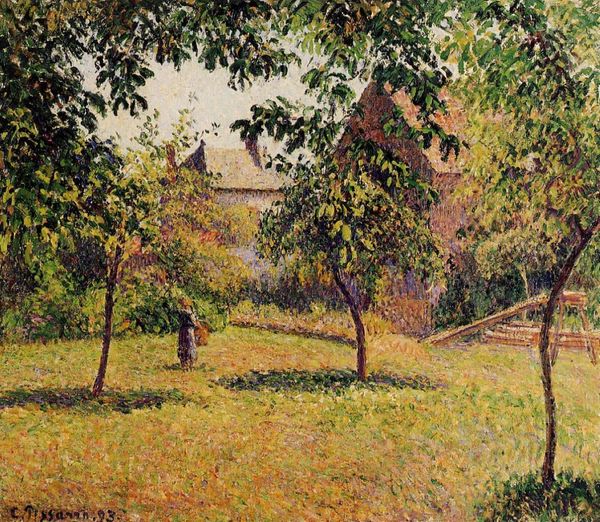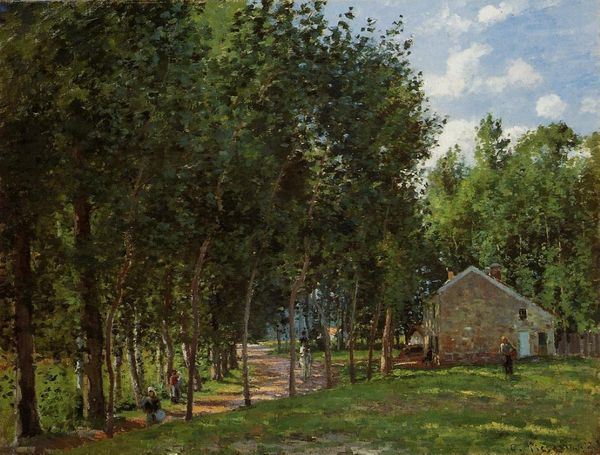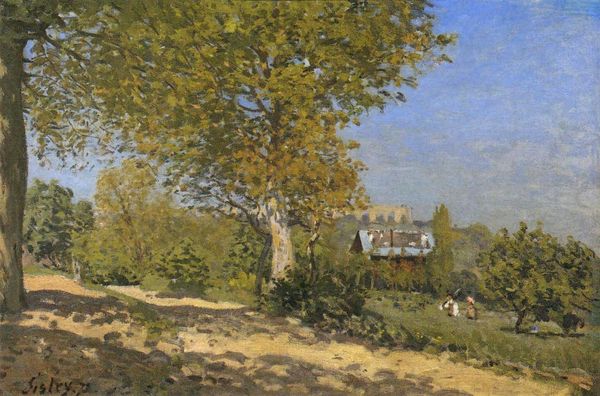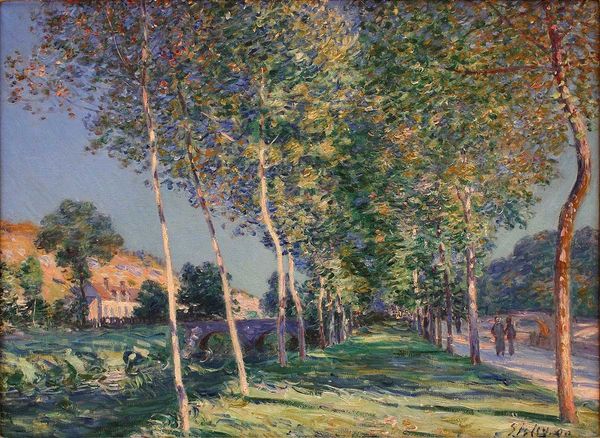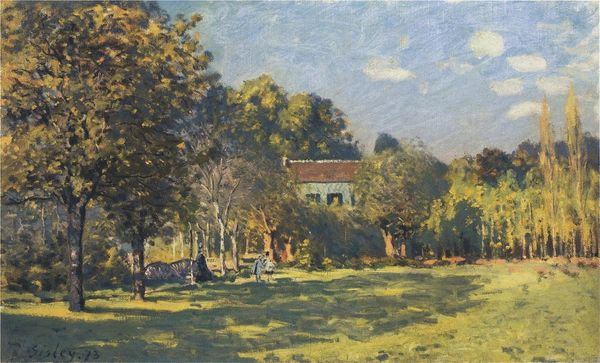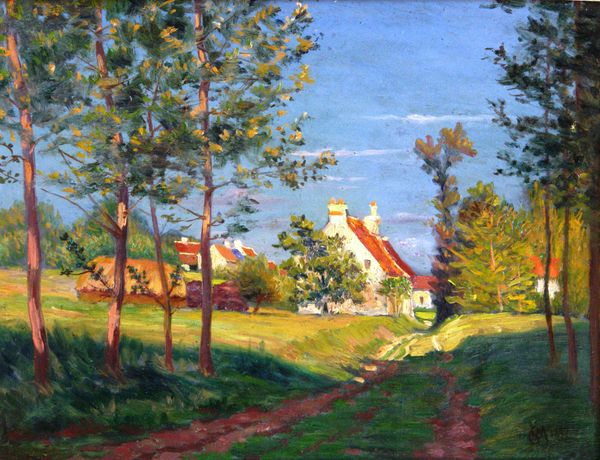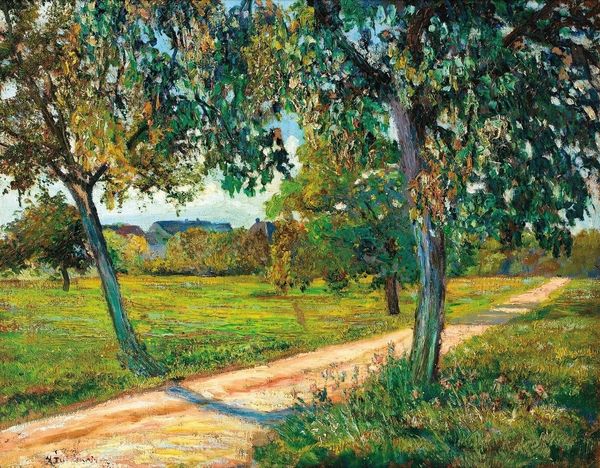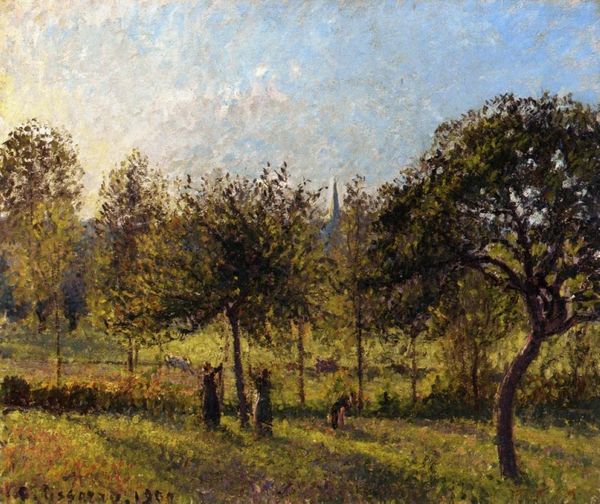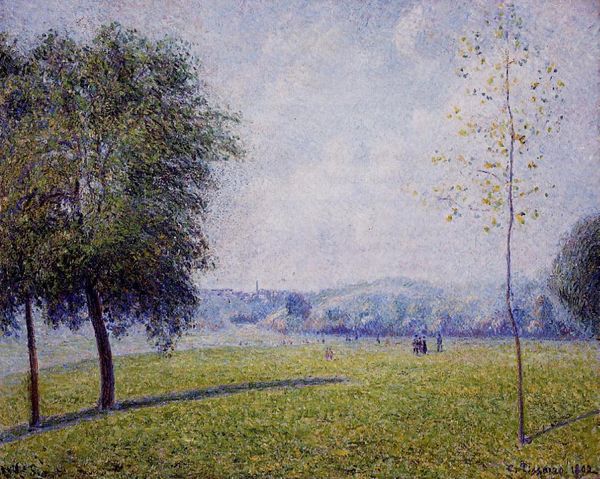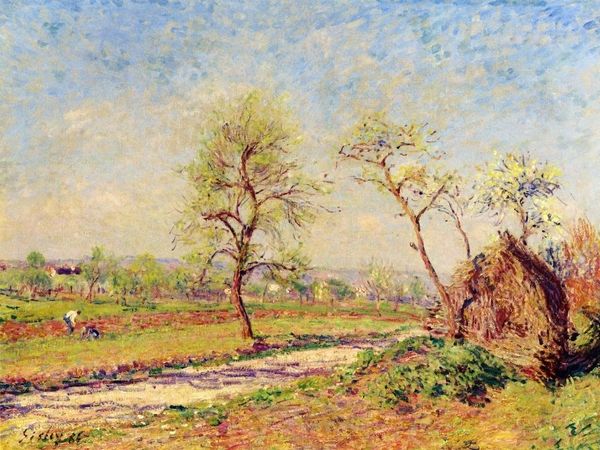
Dimensions: 73.66 x 83.82 cm
Copyright: Public domain
Curator: Willard Metcalf’s “The Path,” created in 1915, draws us into a quintessential impressionistic scene. Editor: I'm struck by how incredibly inviting this space feels. There's such tranquility here, almost beckoning us to step onto that path ourselves. Curator: Metcalf was a leading figure within the Ten American Painters, later known as The Ten, a group that championed impressionism in the face of academic resistance. His commitment to painting en plein air captures the fleeting effects of light and atmosphere masterfully. Editor: Exactly. That fleeting moment really makes it look like a liminal space, and its temporality highlights the natural state of the countrywide: green, lush, and vibrant, while its occupants stroll across. There is, though, a strange lack of focus on human elements of this scene; figures fade as we look on this scene, making this work's focal point the environment itself. What is the greater sociopolitical discourse going on that would encourage such treatment? Curator: Certainly. There were anxieties in early 20th-century American culture stemming from rapid industrialization and urbanization. Perhaps works such as this were meant to serve as a balm or counterpoint, evoking a longing for an idealized, simpler time. Editor: But can that 'simpler time' truly be simple for everyone? Looking back, we cannot ignore the social disparities deeply entrenched in the historical period reflected in this artwork. For whom was this nature truly accessible and restorative? The quiet countrysides always leave someone out, which creates interesting tensions in otherwise "beautiful" imagery such as this. Curator: I concede to your point about its complicated history, though in viewing such landscapes, contemporaries were perhaps attempting to momentarily bracket such harsh realities. What do you make of Metcalf’s use of light here? Editor: It's a dance of light and shadow, the sun dappling through the leaves creates a sense of depth, but, from my viewpoint, they still only speak for the artist’s background. With their fleeting light and emphasis on surface, it reminds me a little bit of bourgeois activities such as picnicking in nature rather than labor in it, something art historians rarely comment on. Curator: That's an insightful observation. I hadn't considered the class implications in his presentation of this environment before. Editor: These sorts of paintings can reveal more than just an idyllic view. By analyzing these socio-political undertones in the cultural context and examining Metcalf’s personal history, “The Path” tells stories, too.
Comments
No comments
Be the first to comment and join the conversation on the ultimate creative platform.
